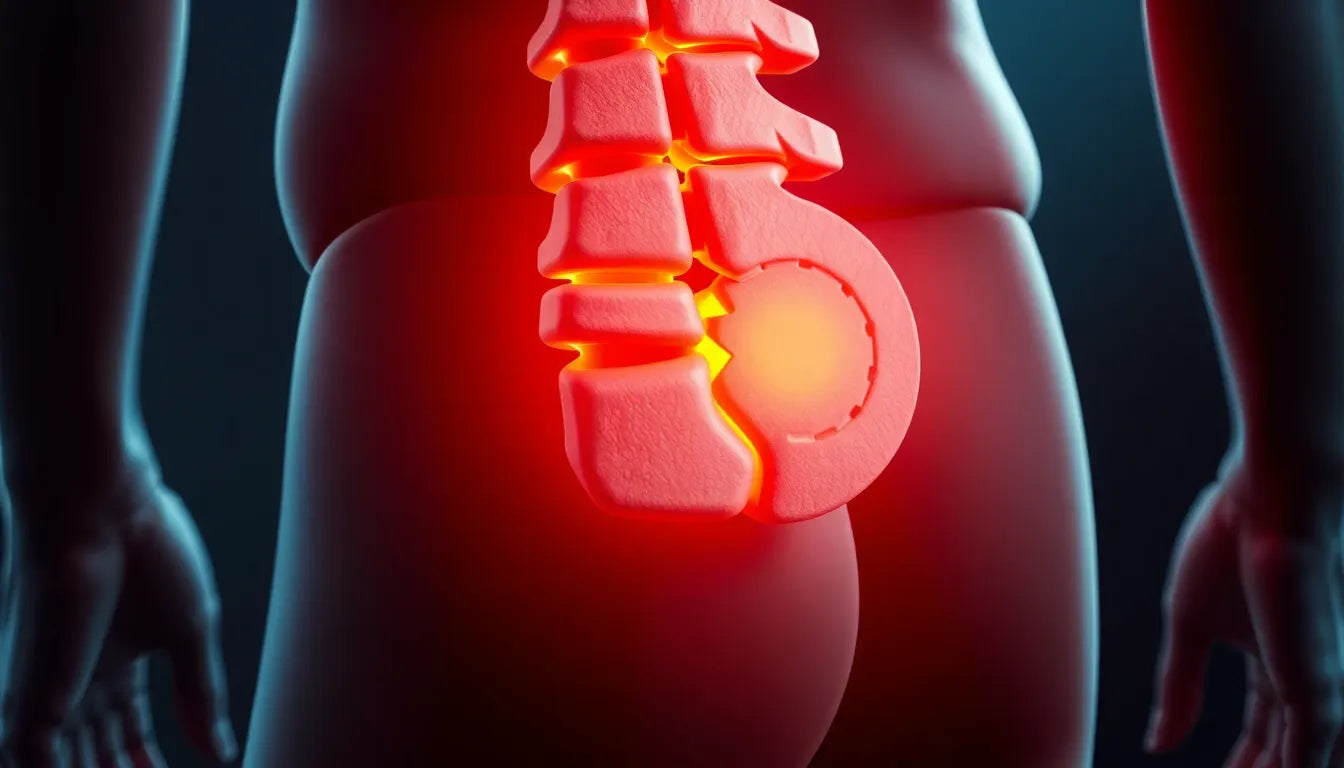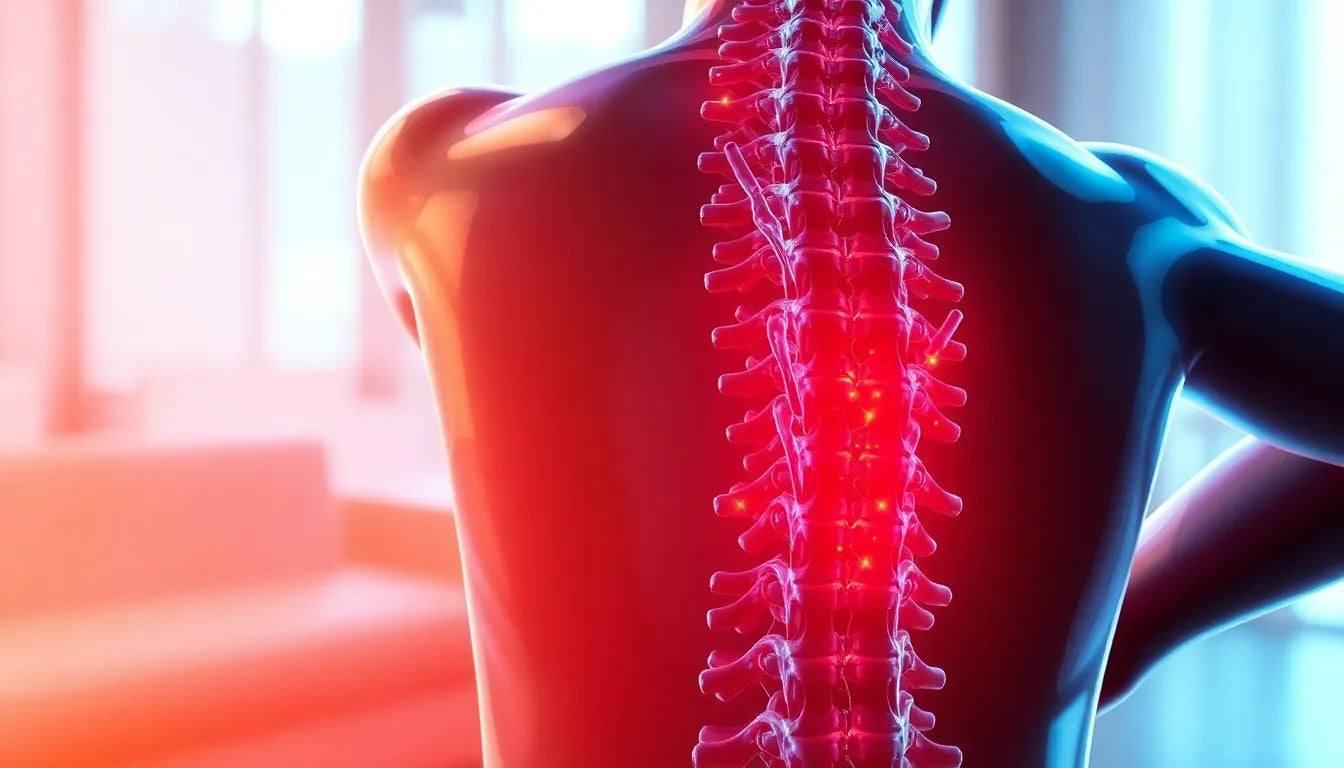Understanding how a herniated disc is fixed begins with grasping what a herniated disc actually is. Our spine consists of a series of bones called vertebrae, cushioned by soft, gel-like discs. These discs act as shock absorbers, providing flexibility and support. A herniated disc occurs when the inner gel pushes through a tear in the outer layer of the disc. This can lead to pain, numbness, and weakness, often affecting the lower back or neck. If left untreated, it can cause further complications, making it essential to address the issue promptly to enhance quality of life.
treatment overview: a spectrum of options
The question of how a herniated disc is fixed encompasses a wide range of treatments, from conservative methods to surgical interventions. The primary aim of any treatment is to alleviate pain, restore function, and prevent recurrence. Conservative treatments often serve as the first line of defense, focusing on non-invasive methods to manage symptoms. When these options prove insufficient, surgical procedures might be considered to provide relief and restore mobility. Understanding the full spectrum of treatments allows individuals to make informed decisions about their care.
the decision-making process: tailored to individual needs
Choosing the right treatment for a herniated disc is a nuanced process that depends on several factors, including the severity of symptoms, the patient's overall health, and lifestyle considerations. Mild cases with manageable symptoms might respond well to rest and physical therapy, while more severe cases could necessitate surgical intervention. This decision-making process is critical, as it ensures that the chosen treatment aligns with the patient's specific needs and circumstances. In the following sections, we will delve deeper into each treatment pathway, providing a comprehensive guide to fixing a herniated disc.
conservative approaches: non-surgical treatments for herniated discs
When considering how a herniated disc is fixed, the first line of treatment often involves conservative, non-surgical methods. These approaches aim to manage symptoms effectively while allowing the body to heal naturally. One of the primary recommendations is rest and lifestyle modification. It's crucial to avoid activities that exacerbate pain, such as heavy lifting or prolonged sitting. However, it's equally important to avoid prolonged bed rest, as it can lead to muscle weakening and further complications.
Physical therapy plays a pivotal role in the conservative management of herniated discs. A tailored physical therapy program focuses on strengthening the muscles surrounding the spine and improving flexibility. Common exercises might include gentle stretches, core strengthening, and aerobic conditioning, all designed to reduce pressure on the spinal nerves and enhance overall spinal health.
medication and therapeutic interventions
For many patients, medication is an essential component of conservative treatment. Nonsteroidal anti-inflammatory drugs (NSAIDs) are commonly used to reduce inflammation and alleviate pain. In cases of muscle spasms, muscle relaxants may be prescribed. For more severe pain, prescription medications might be necessary, but these are typically used with caution due to potential side effects.
In addition to medication, heat and cold therapy can provide significant relief during the acute phase of a herniated disc. Alternating between heat and cold packs helps to control inflammation and soothe muscle tension, offering a simple yet effective method to manage discomfort at home.
advanced non-surgical techniques: spinal decompression and injections
Mechanical spinal decompression is another non-invasive treatment option that can be highly effective for some patients. This technique involves gently stretching the spine, which can help reposition the herniated disc and relieve pressure on the nerves. Studies have shown promising results, with many patients experiencing significant pain relief and improved function.
For those who do not respond to initial conservative treatments, injections might be considered. Epidural steroid injections and selective nerve root blocks are frequently used to reduce inflammation and provide pain relief. These injections can also serve a diagnostic purpose, helping to pinpoint the source of pain. Success rates for these procedures range from 75% to 88%, making them a viable option for many individuals struggling with persistent symptoms.
surgical treatments: when to consider surgery for a herniated disc
While conservative treatments are often effective, some cases of herniated discs may require surgical intervention. A microdiscectomy is the most common surgical procedure for herniated discs, involving the removal of the portion of the disc that is pressing on a nerve root. This minimally invasive procedure typically results in shorter recovery times and high success rates.
In certain situations, a more extensive discectomy may be necessary, particularly if a larger portion of the disc needs to be removed. Alternatively, for patients seeking to preserve spinal motion, artificial disc replacement offers a promising option. This procedure involves replacing the damaged disc with an artificial one, maintaining mobility and potentially reducing the risk of adjacent segment degeneration.
Spinal fusion is another surgical option, often recommended when spinal stability is compromised. This procedure involves fusing two or more vertebrae to restore stability and reduce pain. While spinal fusion can be highly effective, it does come with potential risks, such as reduced spinal flexibility and the possibility of adjacent segment disease.
In summary, understanding how a herniated disc is fixed requires a comprehensive approach that considers both non-surgical and surgical options. By tailoring treatment to the individual’s specific needs and circumstances, patients can achieve optimal outcomes and improve their quality of life.
making the right choice for herniated disc treatment
Determining how a herniated disc is fixed is a collaborative process between the patient and their healthcare provider. This decision is guided by the severity of symptoms, the extent of nerve involvement, and the patient's overall health and lifestyle. Personalized care is paramount, ensuring that the chosen treatment aligns with the patient's needs and preferences. For some, conservative management may suffice, while others may require surgical intervention to achieve relief and restore function.
recovery and rehabilitation: a vital phase
Recovery from a herniated disc, whether through conservative or surgical means, is a critical phase that requires dedication and patience. For non-surgical treatments, recovery may involve several weeks of physical therapy, focusing on exercises that enhance flexibility and strengthen the back. Patients are encouraged to maintain an active lifestyle, incorporating low-impact activities like walking or swimming to support spinal health.
In contrast, surgical recovery varies depending on the procedure. After a microdiscectomy, patients can often return to normal activities within a few weeks, while more extensive surgeries like spinal fusion may require several months of rehabilitation. Regardless of the treatment path, ongoing physical therapy and lifestyle modifications are essential to prevent recurrence and maintain long-term spinal health.
Frequently Asked Questions
How long does it take to recover from a herniated disc?
Recovery time varies depending on the treatment approach. Conservative treatments, such as physical therapy, may take several weeks to show improvement. Surgical recovery, such as from a microdiscectomy, typically ranges from a few weeks to a few months, depending on the procedure's complexity and the patient's adherence to rehabilitation protocols.
When should I consider surgery for a herniated disc?
Surgery is usually considered when conservative treatments fail to alleviate symptoms, or when there is significant nerve involvement causing severe pain, weakness, or loss of function. A healthcare provider will evaluate these factors to determine the best course of action.
Can a herniated disc heal on its own?
In many cases, a herniated disc can improve over time with conservative management. The body's natural healing processes can reduce inflammation and allow the disc to heal. However, persistent or worsening symptoms may require further intervention.
What are the risks of surgery for a herniated disc?
Surgical risks include infection, bleeding, nerve damage, and, in rare cases, recurrence of the herniation. Surgeons take precautions to minimize these risks, and discussing potential complications with a healthcare provider can help patients make informed decisions.
How can I prevent a herniated disc from recurring?
Preventative measures include maintaining a healthy weight, practicing good posture, and engaging in regular exercise to strengthen the core and back muscles. Avoiding activities that strain the spine, such as heavy lifting or prolonged sitting, can also help protect against recurrence.
Understanding how a herniated disc is fixed involves a comprehensive approach, considering both non-surgical and surgical options. By tailoring treatment to the individual's specific needs and circumstances, patients can achieve optimal outcomes and improve their quality of life.
Sources
- Mayo Clinic. "Herniated Disk: Diagnosis & Treatment."
- Sciatica.com. "Herniated Disc Treatment."
- Cleveland Clinic. "Herniated Disc: Causes, Symptoms, and Treatments."
- WebMD. "Herniated Disc: Causes, Symptoms, and Treatment Options."
- Cuellar Spine. "Herniated Disc: Treatment Options."
- MidAmerica Orthopaedics. "Herniated Disc Treatment."
- Northeast Spine and Sports. "Herniated Disc: Overview and Treatment."


















